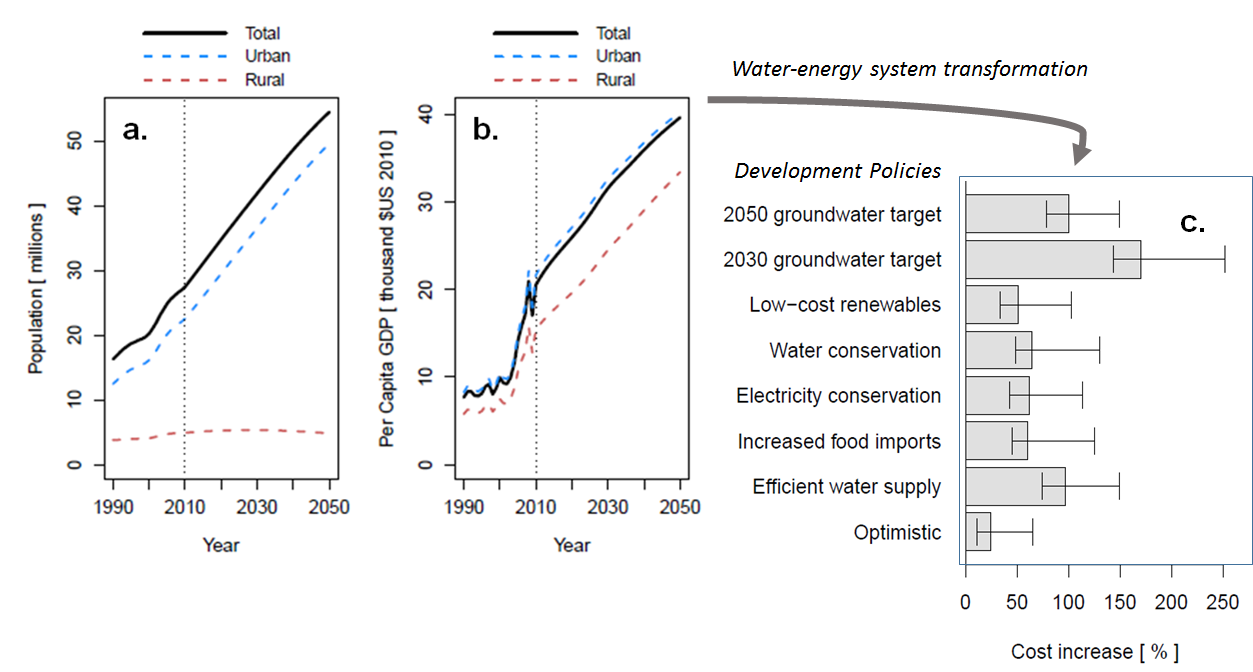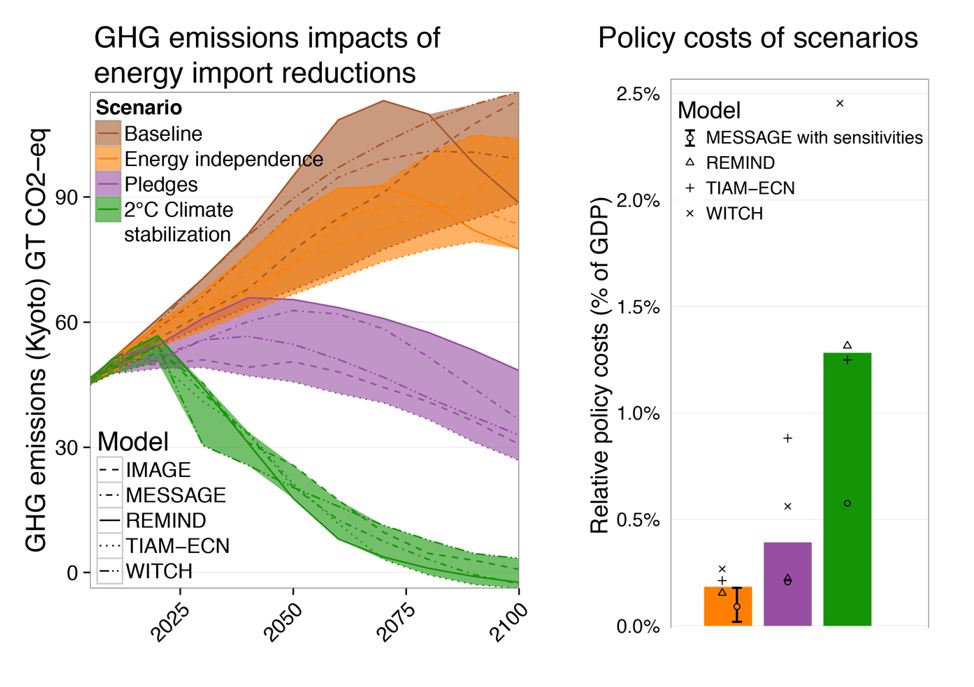Energy and the Sustainable Development Goals
In exploring the complex interplay between climate action and sustainable development, the IIASA Energy Program (ENE) has assessed what makes climate policies effective. Specifically the researchers have explored the interaction of climate policy with a host of other policy objectives, including the implications for water and energy security.
Designing effective policy is crucial if we are to avoid catastrophic climate change. To determine what works, researchers from the Linking Climate and Development – Leveraging International Networks and Knowledge Sharing (CD-LINKS) project examined 19 case studies. Barriers to policy success included a lack of money and required infrastructure, or contractual challenges when many parties needed to establish business relations. When it came to the interaction of climate and sustainable development, many cases—especially those in developing countries—showed that other aspects of sustainability, such as reducing air pollution, were the drivers behind policies and climate mitigation was essentially a co-benefit.
Through collaboration with international modeling teams (in Brazil, China, the EU, India, Japan, Russia, and the USA) the CD-LINKS project has also developed transformation pathways that coincide with national contexts but at the same time are consistent with the Paris Agreement objectives of limiting temperature change to 1.5-2°C.
Limiting temperature change in this way will require a transformation of the global energy system. However, different climate-friendly energy technologies require varying amounts of water, and therefore such a transition could have a substantial impact on water demand. To examine these impacts, ENE enhanced the Model for Energy Supply Strategy Alternatives and their General Environmental Impact (MESSAGE) to account for energy-related water use. After applying the model to a range of scenarios, all of which would ensure a 2°C limit [1], the researchers demonstrated that strategies combining improved energy efficiency with a rapid scale-up of solar and wind power generation can yield climate stabilization, reduced water demand, and improved water quality.
A case study on the Kingdom of Saudi Arabia illustrated the critical need of balancing water use and climate objectives on the national level. In Saudi Arabia, a transition away from groundwater use by the year 2050 could increase national electricity demands by more than 40% relative to 2010 conditions. Simon Parkinson and colleagues conclude that the increase in energy demand would be primarily due to the expansion of energy-intensive desalination and water conveyance [2][3].
Economic impacts of combined climate and groundwater policies in Saudi Arabia. a. Population to 2050; b. Income to 2050; c. Cost for combined water-energy system development relative to a case no groundwater or climate targets [2].
Another study examined the impact of energy imports on greenhouse gas emissions. While it has been established that energy imports would fall if greenhouse gas emissions were reduced, the team wanted to know if emissions fall when energy imports are restricted.
The results showed that while emissions reductions generally benefit energy security—by reducing energy imports—policies focusing on energy security do not show the same co-benefits for climate targets. In fact, policies to reduce energy imports would only lower emissions enough to limit warming to roughly 3.5°C to 4°C.
The study also compared the relative costs of energy independence and climate policies. Reducing energy imports would cost between 3 and 20 times less than stabilizing climate change at 2°C by 2100, but would be comparable to the cost of the climate pledges. Thus, while climate policies can lead to lower energy imports, these can be reduced more cheaply through energy import restrictions.
The impacts of energy import restrictions on greenhouse gas emissions and the relative costs of energy independence and climate policies.
References
[1] Fricko O, Parkinson S, Johnson N, Strubegger M, van Vliet MTH, & Riahi K (2016). Energy sector water use implications of a 2°C climate policy. Environmental Research Letters 11 (3): e034011.
[2] Parkinson S, Djilali N, Krey V, Fricko O, Johnson N, Khan Z, Sedraoui K, & Almasoud AH (2016). Impacts of Groundwater Constraints on Saudi Arabia’s Low-Carbon Electricity Supply Strategy. Environmental Science & Technology 50 (4): 1653-1662
[3] Parkinson S, Makowski M, Krey V, Sedraoui K, Almasoud AH, & Djilali N (2017). A multi-criteria model analysis framework for assessing integrated water-energy system transformation pathways. Applied Energy.
[4] Cherp A, Jewell J, Vinichenko V, Bauer N, & De Cian E (2013). Global energy security under different climate policies, GDP growth rates and fossil resource availabilities. Climatic Change 136 (1): 83-94.
[5] Jewell J, Cherp A, & Riahi K (2014). Energy security under de-carbonization scenarios: An assessment framework and evaluation under different technology and policy choices. Energy Policy 65: 743-760.
[6] Jewell J, Cherp A, Vinichenko V, Bauer N, Kober T, McCollum DL, van Vuuren DP, & van der Zwaan B (2013). Energy security of China, India, the E.U. and the U.S. under long-term scenarios: Results from six IAMs. Special Issue on Implementing Climate Policies in the Major Economies: An Assessment of Durban Platform Architectures — Results from the LIMITS Project. Climate Change Economics 4 (4): p. 1340011.
[7] Pahle M, Pachauri S, & Steinbacher K (2016). Can the Green Economy deliver it all? Experiences of renewable energy policies with socio-economic objectives. Applied Energy: 1331-1341.
[8] Rogelj J, den Elzen M, Höhne M, Franzen T, Fekete H, Winkler H, Schaeffer R, Sha F, et al. (2016). Paris Agreement climate proposals need a boost to keep warming well below 2°C. Nature 534: 631-639.
[9] von Stechow C, Minx JC, Riahi K, Jewell J, McCollum D, Callaghan MW, Bertram C, Luderer G, et al. (2016). 2°C and SDGs: united they stand, divided they fall? Environmental Research Letters 11 (3): e034022.
Collaborators
- Michelle van Vliet, IIASA Water Program and Wageningen University, Netherlands
- Ned Djilali, Institute for Integrated Energy Systems, University of Victoria, Canada
- Khaled Sedraoui and Dr. Abdulrahman H. Almasoud, Renewable Energy Research Group, King Abdulaziz University, Saudi Arabia
- Zarrar Khan, Institute for Research in Technology, Universidad Pontificia Comillas, Spain
- Fondazione Eni Enrico Mattei, Italy
- Potsdam Institute for Climate Impact Research, Germany
- Energy research Centre of the Netherlands
- PBL Netherlands Environmental Assessment Agency
- University of Utrecht, Netherlands
- Central European University
- Euro-Mediterranean Center on Climate Change, Italy
- Institute of Communications and Computer Systems, Greece
- Institute for Sustainable Development and International Relations, France
- The Energy and Resources Institute, India
- Energy Planning Program (PPE) of the Alberto Luiz Coimbra Institute – Graduate School and Research in Engineering at the Federal University of Rio de Janeiro, Brazil
- Wageningen University, Netherlands
- University of East Anglia, UK
- Energy Research Institute of the National Development and Reform Commission, China
- Tsinghua University, China
- Indian Institute of Management, India
- Higher School of Economics, National Research University, Russia
- National Institute for Environmental Studies, Japan
- Research Institute of Innovative Technology for the Earth, Japan
- Pacific Northwest National Laboratory, USA
- Korea Advanced Institute of Science and Technology, Republic of Korea
- European Commission Joint Research Centre


